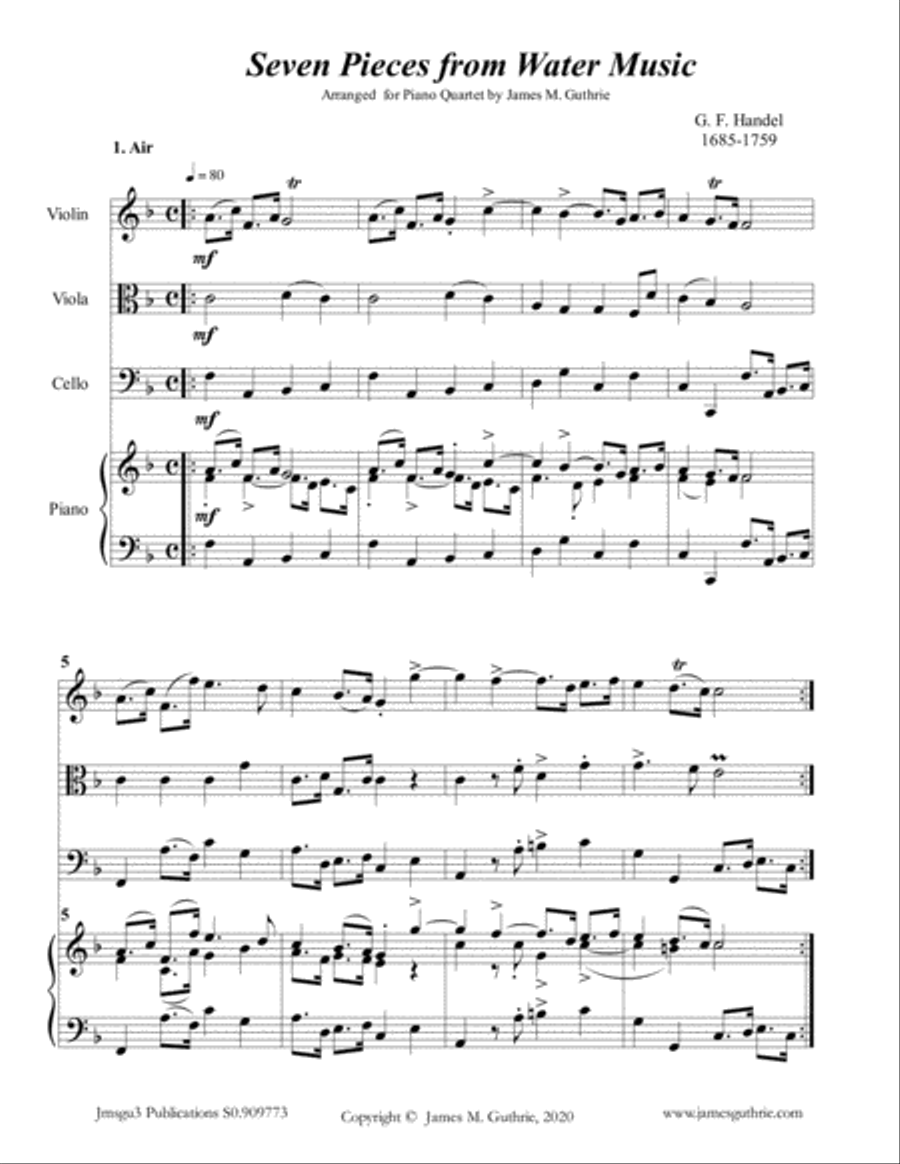Piano Quartet,String Ensemble Cello,Piano,Viola,Violin - Level 3 - Digital Download SKU: A0.552117 Composed by George Friderick Handel (1685-1756). Arranged by James M. Guthrie. Baroque,Instructional,Standards,Wedding. Score and parts. 36 pages. Jmsgu3 #6121085. Published by jmsgu3 (A0.552117). Seven popular pieces from Handel's Water Music - most often requested for weddings. Score: 16 pages, Duration 12:15. Players may read from the score, or from the included instrumental parts.Contents: 1. Air2. Minuet3. Bourrée4. Hornpipe5. Rigaudon6. Minuet7. AndanteHandel's Water Music is one of his most famous compositions. It was written for King George I's pleasure barge trip along the River Thames in 1717. The Water Music is divided into three suites, each containing a variety of movements. The music features a mix of dance rhythms such as minuets, bourrees, and hornpipes, along with lively fanfares and slower, more stately airs. Its combination of light and playful music with grandeur and pomp has made it one of the most beloved pieces of classical music. Water Music has been performed by many orchestras and is a popular choice for special occasions, such as coronations and weddings. Its enduring popularity has helped to make it one of Handel's most famous and beloved compositions.Weddings during the time of Handel were usually quite extravagant affairs. The ceremony was typically held in a church and was accompanied by a full orchestra. Handel's own compositions were frequently used to provide the music for the ceremony. This was especially true in London, where Handel was based and where his music was extremely popular. Handel wrote a number of pieces specifically for use at weddings, including the popular Wedding Anthem and the Wedding Anthem in D Major. Handel's music provided a sense of grandeur and elegance to the proceedings and was often used to give the wedding an extra special touch.The festivities following the ceremony were also often quite lavish, with a large feast and plenty of dancing. Handel's music was often used to provide the background music for the dancing, and he wrote many dance suites that were specifically designed for this purpose. The bride and groom would often have a special dance to the music of Handel's Water Music, a particularly popular piece for the occasion. Guests at the wedding would be treated to a variety of Handel's works, ranging from his operas to his oratorios, which often had a spiritual or religious theme. Handel's music provided a sense of joy and celebration to the wedding and helped make it an occasion to remember.
